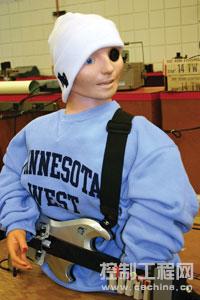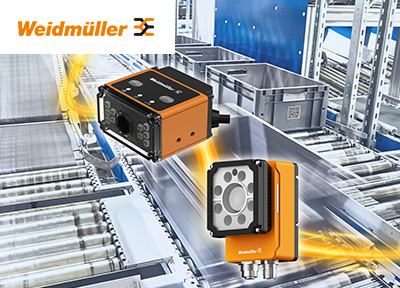Machine vision sensors are often likened to human eyes: They scan and “see” the world around themwww.cechina.cn, then transmit the data elsewhere for some action to occur. But can a vision sensor watch TV? Turns out it can. And when put together with mechanical actuators and a PLC brain, it can also play video games.
Casting about for a project for his robotics class at Minnesota West Community and Technical College, engineering student Pete Nikrin hit on the idea to design a robot to compete against a friend newly introduced to the Guitar Hero electronic game. Playing Guitar Hero requires fast button-pushing on a guitar-shaped input device in response to dots (notes) that move down a path on a video screen.
For the project, Nikrin decided to use a mannequin—complete with Minnesota West sweatshirt and painted fingernails—with a vision sensor in its left eye and mechanical actuators attached to its painted nails. And, he wanted to keep the video game and the robot two separate entities.

When Roxanne plays Guitar Hero, she can achieve up to 95% accuracy on Hard mode控制工程网版权所有, besting creatorCONTROL ENGINEERING China版权所有, Pete Nikrin.
At firstCONTROL ENGINEERING China版权所有, he says, “I couldn't find anything online like it. Then, a month or two into it, a bunch of videos showed up [using other methods]. To the best of my knowledge, though, mine is the only one that has the robot linked only by vision to the game.” Other projects tap directly into the game's electronic signal, which Pete, as a robotics guy, thinks “is kind of cheating.”
Not unlike the process of problem-solving in an industrial applicationCONTROL ENGINEERING China版权所有, Nikrin hit upon two frustrations early on: finding the right sensor and building a vision system with high enough speed for the application.
&


 在线会议
在线会议 论坛
论坛 专题
专题 工控直播
工控直播 新闻中心
新闻中心 子站
子站 技术
技术 社区
社区


 剑维软件电子半导体行业白皮书有奖下载
剑维软件电子半导体行业白皮书有奖下载 魏德米勒麒麟系列产品赋能本土工业
魏德米勒麒麟系列产品赋能本土工业 Fluke 283 FC 智能万用表震撼来袭
Fluke 283 FC 智能万用表震撼来袭 SugonRI2.0工业编程平台免费有奖试用
SugonRI2.0工业编程平台免费有奖试用 IDEC HR8S系列新一代安全继电器有奖试用活动
IDEC HR8S系列新一代安全继电器有奖试用活动



























